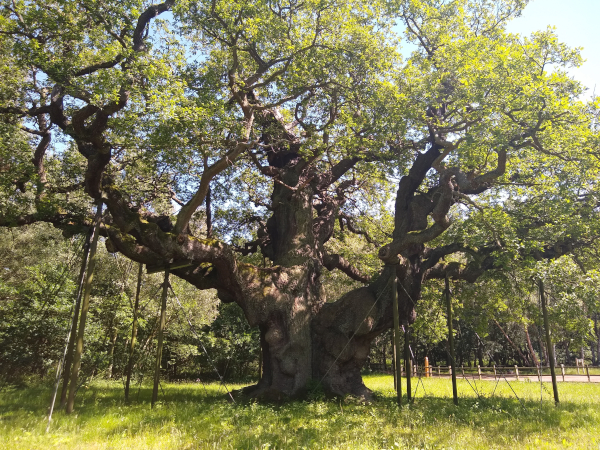It’s difficult to overstate the importance of old trees. Before humans started building towers trees were the tallest freestanding structures on the planet: all terrestrial life measures its vertical axis against them. As trees senesce they accumulate hollows, rot holes and tears that provide habitat for a wealth of species. One old oak can host over 2000 species — the single tree becomes an entire ecosystem.
Old trees survive by chance and historically would have been scattered more or less randomly through the landscape. As that landscape became modified through agricultural use, trees had to work for a living, providing fuel, timber and fodder and often managed as pollards or coppice stools. Even then they were marginalised to field edges, though a few notables served as markers of land ownership.
The intensification of farming, triggered by the transition from animal horse power to mechanical horse power, called for an ever simplified vista. Hedges, together with their trees, were now more of a hindrance than a help. Agricultural subsidies, intended to drive production, funded the grubbing up of these obstacles to progress.
“10,000 oaks of 100 years old are not a substitute for one 500 year old oak“
Oliver Rackham OBE
Importantly, the redundancy of farm trees has led to a hiatus in succession. The move to a fossil fuel driven system of agriculture reduced the demand for tree-derived goods, which in turn led to fewer replacement trees being nurtured. Ever since that time the clock has been ticking for old trees.
The UK is fortunate in having an Ancient Tree Inventory, which started over 15 years ago as a citizen science initiative. To date, over 170,000 ancient, veteran and otherwise notable trees have been recorded, making the database one of the most comprehensive anywhere in the world. But the search method has been unstructured: it’s possible to see the influence that some highly enthusiastic individuals have made on the map. Publicly accessible refugia, such as National Trust properties, are also highly represented.
This begged the questions of how well the dataset presents a fair picture of the distribution of ancient and veteran trees, and to what extent it currently captures their full extent. Mathematical modelling was needed, so together with colleagues at Nottingham University, a PhD project was set up to explore the issues.
This paper is one of the early outputs of the project. There’s more to come, and details will follow in later posts.
“It is not so much for its beauty that the forest makes a claim upon men’s hearts, as for that subtle something, that quality of air that emanation from old trees, that so wonderfully changes and renews a weary spirit”
Robert Louis Stevenson (1875-6)


